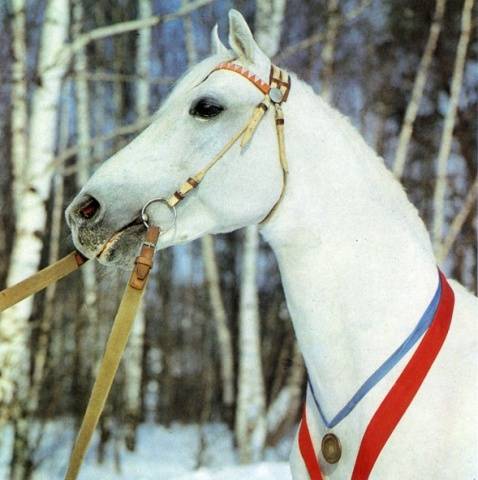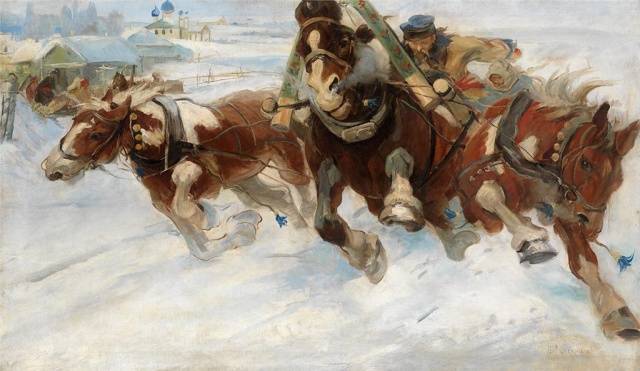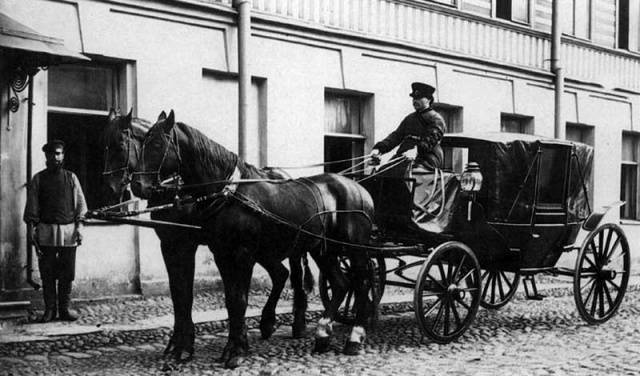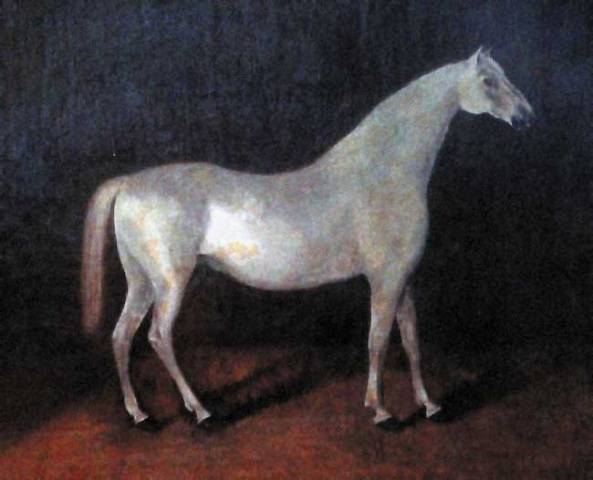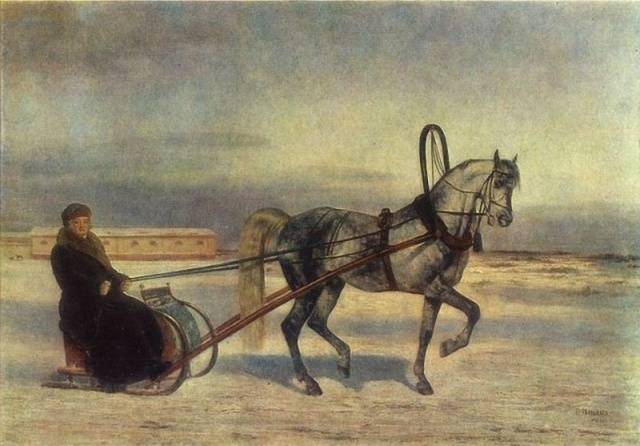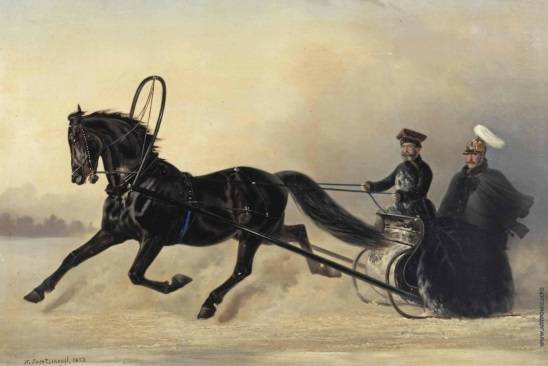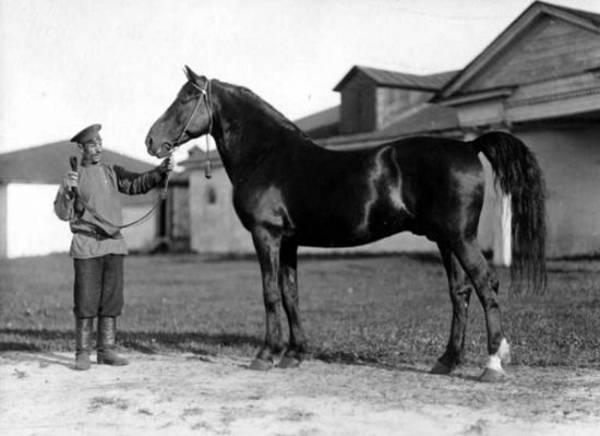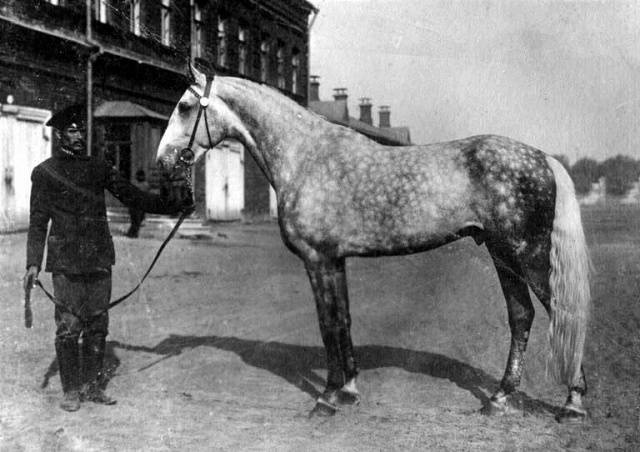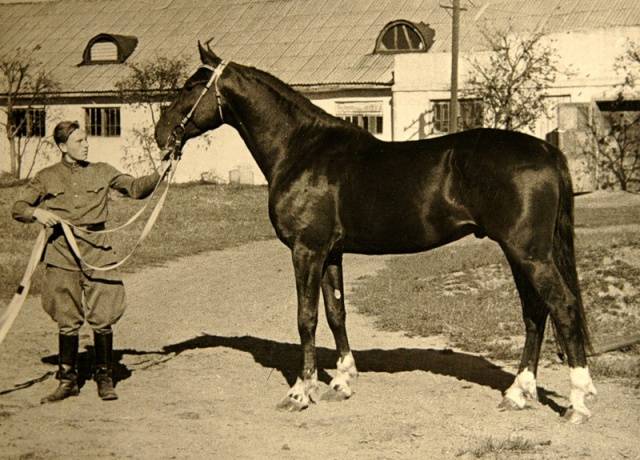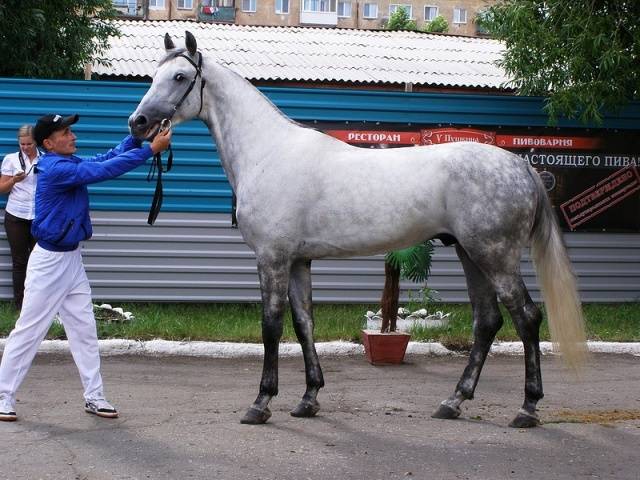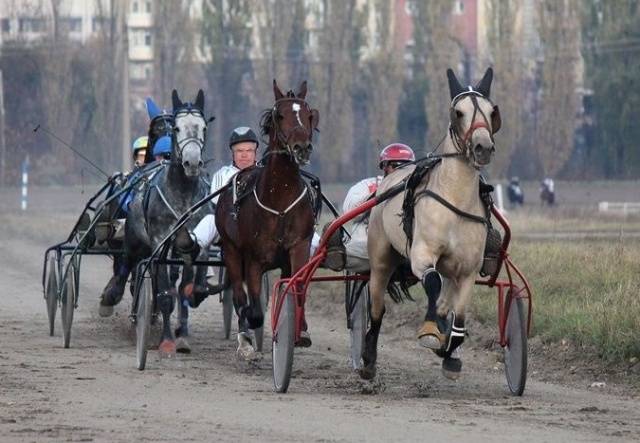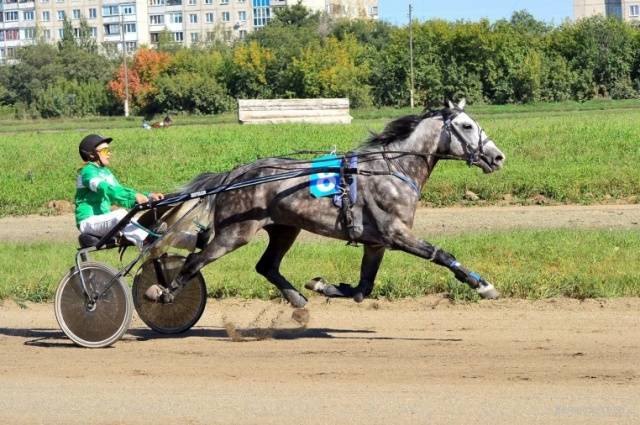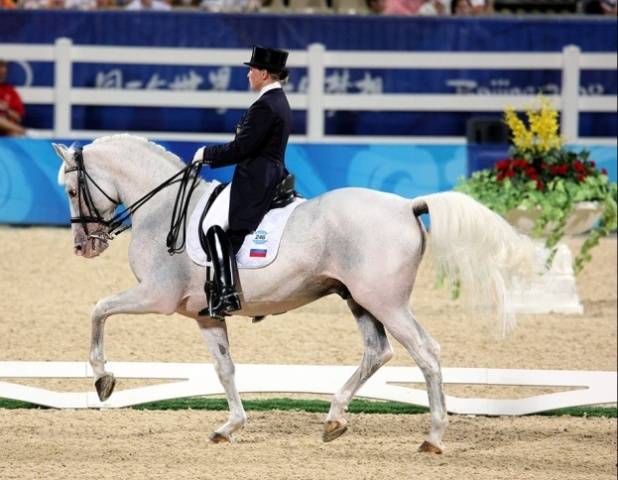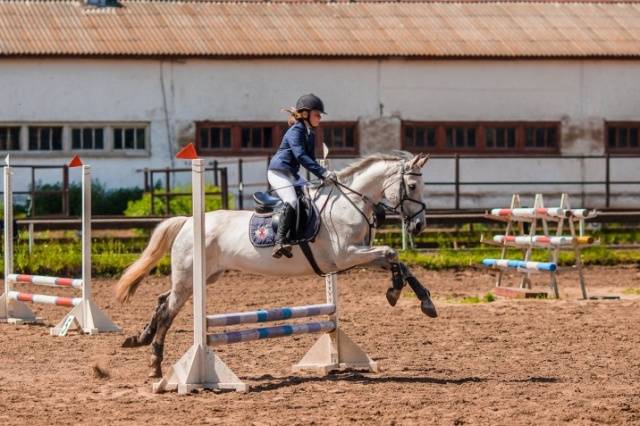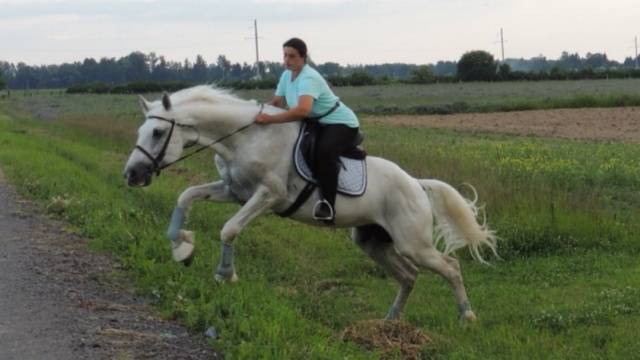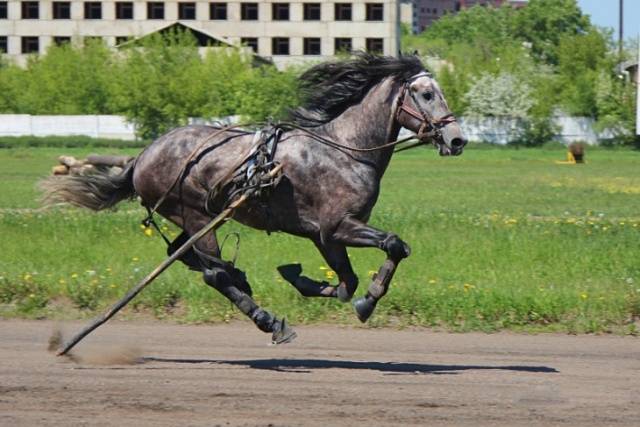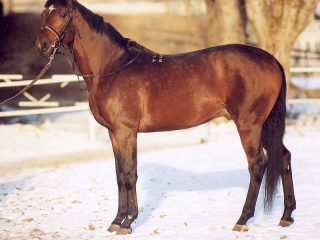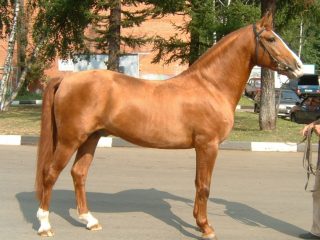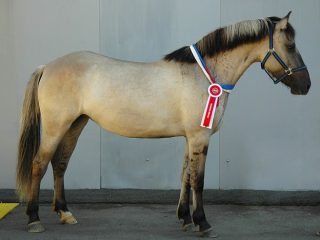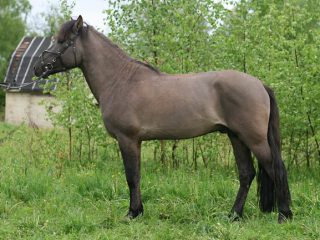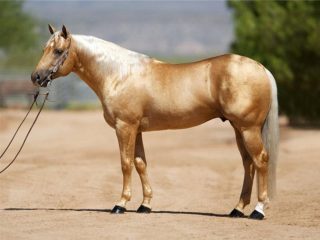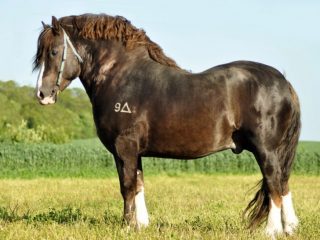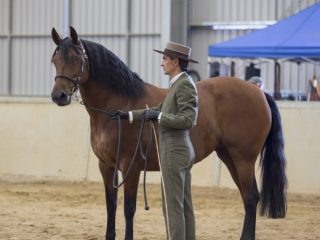Content
The Oryol Trotter is the only breed that arose in the 18th century not because “it happened this way in the course of historical development,” but according to a pre-compiled list of necessary qualities.
At that time, there was no horse anywhere in the world that could trot for many hours. The European horse breeds that bore the proud names “roadster” and “trotter” were heavy, loose and tired quickly. Lighter riding breeds were better suited to galloping.
Europe was little concerned about this situation. The distances there were small compared to the Russian Empire. What were the Russians to do if some European principality could easily fit between Moscow and St. Petersburg in those days? For Russian distances, a horse was needed that was capable of trotting for a long time, since galloping jerks spoiled everything that could be spoiled.
At a gallop, a jerking force occurs that breaks the horses' shoulders, loosens the fastenings of carriages and severely rocks people.Knowing first-hand about these problems, Count Alexey Orlov-Chesmensky seriously thought about breeding his own Russian breed of horses, capable of withstanding the climatic conditions of different regions of Russia and moving in harness for a long time without tiring the riders. None of the local Russian horse breeds, used at that time for traveling long distances, could provide such comfort to riders. The only advantage of Vyatka, Mezenok, Kazanka and other local horses was endurance.
The brother of Catherine the Great's favorite had both the means and the place to found a stud farm. Count Orlov began by purchasing mares and stallions from almost the entire known world. But neither purebred horses nor their crossbreds gave the desired result. According to Orlov's plan, the desired offspring should have been obtained by crossing heavy, raw Neapolitan and Dutch mares, capable of moving at a wide trot for a short time, with dry and light Arabian stallions.
But where could we get those stallions if the Arab tribes at that time were selling culls to stupid Europeans? And even this rejection was highly valued. And Orlov needed truly high-quality producers. Orlov sent scouts everywhere where he hoped to find the stallions he needed. Unexpectedly, the Russian-Turkish War came to Orlov’s aid.
The Mediterranean Russian squadron under the command of Alexei Orlov defeated the Turkish fleet at Chios and Chesme. During the battles, the Turks appreciated the courage and audacity of Eagle Pasha. Several stallions were sent to Orlov as a gift.After the truce, Orlov heard rumors about a very rare stallion, which was being led from Arabia to the Ottoman Empire, but, fearing military action, was hidden in Morea, Greece. Orlov sent scouts there from knowledgeable people. The returning scouts reported that “such a horse had never been seen before.” Orlov immediately wanted to get a stallion for his stable.
Orlov's proposal to sell the horse did not meet with understanding from the Sultan. The incensed Orlov threatened to take the stallion “to the sword.” Taught by bitter experience, the Turks understood that Orel Pasha was able to fulfill his promise and preferred to “voluntarily” part with the horse. As a result, the stallion was sold to Orlov for the then unheard of sum of 60 thousand silver rubles. It can be considered that from this moment the history of the Oryol breed of horses began.
History of Oryol trotters
The purchased stallion truly turned out to be unique. He had a very long body, and after his death it turned out that instead of 18 vertebrae, this horse had 19. Moreover, the extra vertebra was in the thoracic region and because of it, the stallion also had an extra pair of ribs.
The stallion came to the estate of Count Orlov only 1.5 years after the purchase. Fearing the hardships of sea travel, the horse was led around the seas by land. The stallion was led on short journeys, covering only 15 miles a day and gradually switching from barley, common in Arabia, to oats, common in Russia.
After arriving at the estate, the stallion surprised everyone with his large height, length of body, very beautiful silver-white coat and very affectionate disposition. The horse received the nickname Smetanka for the color of its coat.
And the silvery sheen of the coat adds intrigue, as Arabian horses there is no such phenomenon.
Smetanka lived in Russia for less than a year, leaving only 4 foals and a filly. Versions about his death vary.
According to one version, he could not stand the difficult transition. But 15 – 20 km a day is not much for a healthy horse.
According to another version, he could not eat unusual food. But the consequences of eating the wrong feed appear much faster in horses. A smooth transition to a new food does not have any negative consequences.
According to the third version, the stallion, accustomed to the dry air of Arabia, could not withstand the damp Russian climate. And this version already looks plausible. Today, native horses from places far from civilization confirm this version, developing chronic airway obstruction if they are brought to the city.
According to the fourth version, Smetanka stalled near a watering hole, saw mares, slipped, fell and hit the back of his head on the corner of a wooden block. It could also well have been on slippery ground.
Only one thing is known for sure: after the death of Smetanka, his groom hanged himself with the reins.
Polkan I
The continuator of the history of the Orlov trotter was the son of Smetanka, born from a dun Danish mare, Polkan I. This stallion was not yet the ideal of the intended breed, but from him and a gray Dutch mare Bars I was born, who fully corresponded to Orlov’s dreams.
Bars I
Bars I's large height, even by today's standards (166 cm), was combined with strength and a beautiful, agile trot.The required type of the future Oryol trotting horse breed was found. Now it had to be secured. At the age of 7, Bars was sent to a factory, where he produced for 17 years. The pedigrees of all modern Oryol and Russian trotters go back to Bars.
The ideal of Count Orlov was born gray. Since the Leopard was used very actively, the gray color is very common today among Oryol trotters.
There is also an inverse relationship: if it’s gray, it means it’s an Oryol trotter.
Together, Count Orlov and his assistant V.I. Shishkin managed to secure the required type of light draft horse. To improve the productive characteristics of the Oryol trotting horse breed, a system of training and testing of young animals was developed, which made it possible to correctly evaluate young animals when selecting for breeding.
Then they firmly believed in telegony (the superstition is still alive) and believed that if a mare is mated with an unsuitable stallion, she will never bear a thoroughbred foal.
Development of running
Even before Orlov introduced racing as a test of winter performance on the ice of the Moscow River, popular “rides” were held, where owners of high-quality horses showed off their animals. Orlov turned these outings not into random games, but into systematic tests of young animals' agility. The race began to quickly gain popularity, and it turned out that no one else could compete in speed with the Oryol trotter. A new breed of rather massive, elegant, light-harness horses has emerged in Russia.Oryol trotters were in demand not only throughout Europe, but also in the USA.
Decline of the Oryol breed
According to Count Orlovsky's idea, the trotter is a horse suitable for both carts and a governor. But to carry carts, you need to have a massive frame and significant muscle mass. Initially, Oryol trotters had thick shapes and large stature. A photo of the Oryol trotter Barchuk, taken in 1912, confirms this.
Such a horse will easily carry a cart, but due to its mass it is unlikely to be very fast. Meanwhile, the United States developed its own breed of trotters, the only criterion for success being the finishing post. Therefore, when at the very beginning of the twentieth century small but very fast American trotters began to be imported from the USA to Russia, Orlovsky began to lose ground. He could not compete with imported horses. Wanting to receive winnings, the owners of Oryol trotters began to cross them with American ones. Cross breeding has reached such proportions that it has seriously begun to threaten the Oryol trotter as a breed of horse.
Until the appearance of Krepysh, who proved that the Oryol breed had not yet reached the limits of increasing agility. Soon closed races for the Oryol breed and open prizes for trotters of any breed were introduced.
Renaissance
The Oryol breed quite successfully survived the Revolutions and the Civil War. Breeding work with her was centralized and became more productive. Mixed breeds with American Trotters were separated into a separate breed, called the Russian Trotter. In the Soviet Union, the Oryol breed was used as an improver for local aboriginal horses and outbred stock. Even Altai mountain horses were improved by trotters.After World War II and until the collapse of the Union, Oryol trotters were the most numerous factory breed in the country.
The second decline in the history of the Oryol horse breed occurred in the 90s of the last century. The livestock has dropped to a critical level. There are 800 purebred Oryol queens left, while at least 1000 are needed for the normal development of the breed.
Current state of the breed
Lovers and admirers of the Orlov breed “pulled” the Orlov breed out of the “pit” into which the collapse of the economy threw him. Today, the Oryol breed is again one of the most numerous and is not threatened by anything except the possible loss of the old type and the acquisition of similarities with the Russian and American trotters.
But there is no point in testing these Oryol trotters at the hippodrome. They are significantly inferior in speed to their more modern counterparts.
Suits
The color palette of Oryol trotters contains almost all colors common on the European continent. The most common is gray. The graying gene hides a color base, and a gray horse as a foal could be a black, bay, red, dun, nightingale, or ash-black. In the pedigree of trotters, there may be an entry about the color as “red-gray”. In fact, the certificate was issued when the horse had not yet completely turned grey. The end result of graying is always a light gray color of the horse. What people call white.
Since the origin of the Oryol trotters begins with a dun Danish mare, the Cremello gene is present in the breed.Until recently, this color was either not common in the Oryol breed, or was hidden under a gray color. Before the appearance of the dun Oryol Levkoy in Ukraine. The stallion showed good results in tests and was sold to the Chesme stud farm. From him came the dun trotters. In the photo of the Oryol trotters' race, the horse in the foreground is a dun Molybdenum from a dun Blesk. Shine received the suit from his father Levkoy.
Exterior
Like all prize-winning breeds of trotters, the exterior of the Orlovets today is quite diverse. Common features:
- long body;
- strong neck of medium length;
- medium-sized head (can vary from Arabized to “suitcase”);
- limbs with correct posture, well muscled;
- strong dry tendons;
- good hoof horn.
The races are carried out on fairly hard ground, and in winter on an icy track. Therefore, strong legs are the key to preserving life for a horse.
Character
For the most part, trotters of the Oryol breed are distinguished by an easy-going, good-natured character. There may also be “crocodiles” among them, but this is often due to poor handling. The horse is defending itself. In any case, experienced people should work with such a horse.
All trotters, including “crocodiles,” are distinguished by their honesty in their work. They were selected this way: to give all of themselves and a little more on top. But this honesty plays against them, since the trotter is crippled under unbearable demands. And sometimes it cripples the rider too.
Application
The main area of modern use of a trotter of any breed is racing. Betting is poorly developed in Russia, otherwise it would be a very profitable industry.
The Orlov Trotter is a horse of universal use.They are not very popular in dressage because of their specific four-beat “trotting” canter. But not all trotters gallop like this. Plus he's getting better. Although as an exception, the Oryol trotter reached the Olympic Games. In the photo there is a horse of the Oryol breed Balagur under the saddle of Alexandra Korelova.
In show jumping, the Oryol trotter is capable of jumping well at low and medium heights. But you don’t need to demand more from him. He will climb, he is honest. And he will get hurt. The best option is for him to teach novice riders how to jump.
The trotter carries its owner well on horseback rides in the fields, as you can see in this photo of the Oryol horse.
But sometimes the Oryol trotter can become mischievous.
Reviews
Conclusion
Due to the fact that the Oryol trotting breed is very widespread in Russia, the cost of non-breeding Oryol horses is low. And its versatility and easy-going nature make the Oryol Trotter an indispensable horse for beginners.
